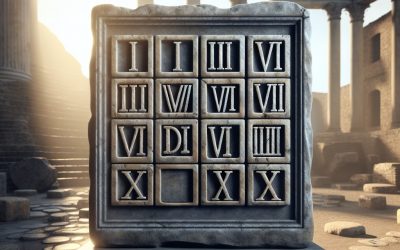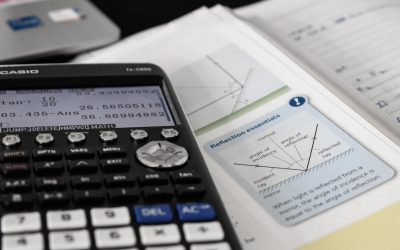➕ Introduction to Mathematics
The Language of Patterns, Logic, and Problem-Solving
Mathematics is the science of numbers, shapes, patterns, and relationships. It provides a universal language to describe the world around us—whether we’re counting, measuring, predicting, or solving complex problems. More than just calculations, maths is a way of thinking: logical, precise, and creative.
At its core, mathematics explores questions like:
-
How do we measure and compare things?
-
What happens when we follow certain rules or operations?
-
How can we predict outcomes or analyse patterns?
-
What structures exist beneath the surface of reality?
Maths is used in every area of life—from calculating a grocery bill to designing bridges, forecasting the weather, or sending spacecraft to Mars. It’s essential in science, engineering, technology, economics, architecture, and even music and art.
Divided into fields such as arithmetic, algebra, geometry, statistics, and calculus, mathematics grows more powerful as we explore deeper concepts. And it’s not just about finding the right answer—it’s about understanding why it’s right, and discovering new ways to think.
Studying maths sharpens our ability to reason, solve problems, and recognise the hidden patterns that shape our world.
Multiplication
Multiplication is a fundamental mathematical operation that involves combining two or more numbers to find their total value. It is often represented by the symbol “x” or “*”, and the result of a multiplication operation is called the product. For example, multiplying 3 by 4 gives a product of 12. Basic multiplication facts are essential to understanding and solving more complex mathematical problems. These facts include the multiplication tables from 1 to 10, which are often memorized by students to improve their speed and accuracy in calculations. For example, knowing that 7 multiplied by 8 equals 56 can be useful in various situations, such as calculating the total cost of buying 8 items at a price of £7 each. Symbols and terminology used in multiplication include the multiplication sign “*”, which indicates that two or more numbers are being multiplied together. The numbers being multiplied are called factors, and the result is called the product. For example, in the equation 5 * 6 = 30, 5 and 6 are the factors, and 30 is the product. Summary Multiplication is the process of repeated addition and is a fundamental concept in mathematics. Memorizing multiplication tables can be made easier by using tricks such as skip counting and visual aids. Multiplication is used in everyday life, from calculating grocery bills to determining the area of a room. Division is the inverse operation of multiplication and can be used to solve problems involving equal sharing or grouping. Multiplication can be used to simplify complex calculations involving fractions, such as finding a common denominator. Mastering Multiplication Tables: Tips and Tricks Memorizing multiplication tables...
Written Adding and Subtracting
Written adding and subtracting are fundamental skills in mathematics that allow us to perform calculations with numbers. These skills involve the ability to add or subtract two or more numbers using a written method, such as using columns or lines. Learning these skills is important because they provide a foundation for more advanced mathematical concepts and problem-solving. Summary Written adding and subtracting involves using symbols and numbers to perform mathematical operations. Basic addition techniques include adding numbers from right to left and carrying over any excess digits. Basic subtraction techniques involve subtracting numbers from right to left and borrowing from the next digit if necessary. Regrouping and borrowing in addition and subtraction involve manipulating digits to perform more complex operations. Adding and subtracting with decimals and fractions require additional steps, such as aligning decimal points and finding common denominators. Word problems involving addition and subtraction require careful reading and interpretation of the problem. Mental math strategies for addition and subtraction include breaking numbers down into smaller parts and using known facts to simplify calculations. Common mistakes to avoid in written adding and subtracting include misaligning digits, forgetting to carry or borrow, and making errors in decimal or fraction calculations. Basic Addition Techniques To add numbers, follow these steps:1. Write the numbers in columns, aligning the digits according to their place value.2. Start adding the digits in the rightmost column (ones place) and write the sum below the line.3. If the sum is greater than 9, carry over the tens digit to the next column.4. Repeat steps 2 and 3 for each column, moving from right to left. For example,...
Rounding Numbers
Rounding numbers is a fundamental mathematical concept that is used in everyday life. It involves approximating a number to a certain degree of accuracy. This is done by replacing the number with another number that is easier to work with or understand. Rounding numbers is important because it allows us to simplify calculations, estimate quantities, and communicate information more effectively. In everyday life, rounding numbers is used in various situations. For example, when shopping, we often round prices to the nearest dollar or pound to get an estimate of how much we will be spending. When cooking, we may round measurements to the nearest teaspoon or tablespoon for convenience. Rounding numbers is also used in financial transactions, such as when calculating interest rates or determining the total cost of a purchase. Summary Rounding numbers is a common practice in mathematics and everyday life. The basics of rounding involve identifying the place value to round to and determining whether to round up or down. To round to the nearest whole number, look at the digit in the ones place and round up if it is 5 or greater. Rounding to the nearest tenth involves looking at the digit in the tenths place and rounding up if it is 5 or greater. Rounding to the nearest hundredth involves looking at the digit in the hundredths place and rounding up if it is 5 or greater. The Basics of Rounding Numbers Rounding is the process of approximating a number to a specified degree of accuracy. The degree of accuracy is determined by the number of significant digits in the original number. Significant...
Decimals
Decimals are a fundamental part of mathematics and play a crucial role in our everyday lives. They are a way of representing numbers that fall between whole numbers, allowing for more precise measurements and calculations. In simple terms, decimals are numbers that include a decimal point, which separates the whole number part from the fractional part. The importance of decimals in everyday life cannot be overstated. From measuring ingredients in a recipe to calculating distances on a map, decimals are used in a wide range of practical applications. They allow us to express quantities that are not whole numbers, such as money, time, and measurements. Without decimals, our ability to make accurate calculations and comparisons would be severely limited. Decimal notation follows a place value system, similar to whole numbers. Each digit in a decimal number has a specific value based on its position relative to the decimal point. The digit immediately to the left of the decimal point represents the ones place, while the digit to the right represents tenths. The further right you go from the decimal point, the smaller the place value becomes (hundredths, thousandths, etc.). This place value system allows us to easily understand and work with decimal numbers. Summary Decimals are a way of representing numbers that fall between whole numbers. Decimal places refer to the number of digits after the decimal point. Decimal operations include addition, subtraction, multiplication, and division. Converting decimals to fractions involves simplifying and reducing the fraction. Comparing decimals involves determining whether one decimal is greater than, less than, or equal to another decimal. Rounding decimals involves approximating the decimal...
Roman Numerals
Roman numerals are a numerical system that originated in ancient Rome and were used throughout the Roman Empire. The system is based on a combination of letters from the Latin alphabet to represent numbers. The use of Roman numerals dates back to around the 7th century BC, and they were widely used until the 14th century AD. The evolution of Roman numerals over time is quite fascinating. Originally, the system only consisted of six symbols: I, V, X, L, C, and M, which represented the numbers 1, 5, 10, 50, 100, and 1000 respectively. However, as the need for larger numbers arose, additional symbols were introduced. For example, a bar placed above a numeral multiplied its value by 1000. Over time, the system became more complex and intricate. Summary Roman numerals were developed in ancient Rome and were used for counting and record-keeping. Roman numerals use a combination of letters to represent numbers, with each letter having a specific value. To convert Roman numerals to Arabic numerals, you need to add up the values of each letter in the Roman numeral. To convert Arabic numerals to Roman numerals, you need to break down the number into its component parts and then use the appropriate letters to represent each part. While Roman numerals are still used in some contexts, they can be difficult to read and understand, and are not as widely used as Arabic numerals. Understanding the Basic Principles of Roman Numerals In order to understand Roman numerals, it is important to familiarize oneself with the symbols used and their corresponding values. The basic symbols are as follows: –...
Negative Numbers
Negative numbers are a fundamental concept in mathematics that represent values less than zero. They are denoted by a minus sign (-) placed before the number. The concept of negative numbers has been around for thousands of years and has evolved over time. The earliest known use of negative numbers can be traced back to ancient civilizations such as the Babylonians and the Chinese. However, negative numbers were not widely accepted or understood until the 17th century. The Italian mathematician, Girolamo Cardano, is credited with introducing the concept of negative numbers in his book “Ars Magna” published in 1545. Summary Negative numbers are numbers less than zero and are represented with a minus sign (-). Understanding negative numbers is important in mathematics and science as they are used to represent values such as temperature, altitude, and debt. Negative numbers have real-life applications in finance, weather forecasting, and physics. When adding or subtracting negative numbers, the signs must be taken into account and the larger absolute value is subtracted from the smaller absolute value. When multiplying or dividing negative numbers, the product or quotient is positive if there are an even number of negative factors and negative if there are an odd number of negative factors. Understanding the Concept of Negative Numbers To understand negative numbers, it is helpful to visualize them on a number line. A number line is a straight line that represents all real numbers, with zero in the middle and positive numbers to the right and negative numbers to the left. The absolute value of a number is its distance from zero on the number line....
Ordering Numbers
Understanding how to order numbers is a fundamental skill in mathematics. Whether it’s arranging a list of numbers in ascending or descending order, comparing numbers using greater than and less than symbols, or ordering fractions and decimals, the ability to order numbers is essential for solving mathematical problems. In this blog post, we will explore the basics of ordering numbers, including the use of symbols, the importance of place value, strategies for ordering large numbers, and real-life applications of ordering numbers in mathematics. Summary Understanding the basics of ordering numbers is essential in mathematics. The greater than and less than symbols are used to compare numbers. Arranging numbers in ascending and descending order helps in data analysis. Place value is crucial when ordering numbers, especially with large digits. Tips for ordering large numbers include breaking them down into smaller parts. Understanding the basics of ordering numbers Ordering numbers refers to arranging a list of numbers in a specific sequence. This sequence can be either ascending or descending order. In ascending order, the numbers are arranged from smallest to largest, while in descending order, the numbers are arranged from largest to smallest. For example, let’s consider the following list of numbers: 5, 2, 8, 1, 7. To arrange these numbers in ascending order, we start with the smallest number and continue in increasing order. The ascending order of these numbers would be: 1, 2, 5, 7, 8. On the other hand, to arrange these numbers in descending order, we start with the largest number and continue in decreasing order. The descending order of these numbers would be: 8, 7,...
Key Stage 2 Maths for Ages 7 to 11
Key Stage 2 is a crucial stage in a child’s education, as it is the period when they transition from the foundational skills learned in Key Stage 1 to more complex concepts and topics. In the United Kingdom, Key Stage 2 covers children aged 7 to 11 years old, specifically Years 3 to 6. During this stage, children build upon their knowledge and understanding of mathematics, developing key skills that will serve as a foundation for their future learning. The Maths curriculum in Key Stage 2 is designed to ensure that children develop a deep understanding of mathematical concepts and are able to apply their knowledge to solve problems in real-life situations. The curriculum covers a wide range of topics, including number and place value, addition and subtraction, multiplication and division, fractions, measurement, geometry, statistics, and problem solving. Each topic is carefully structured to build upon previous learning and provide a solid foundation for future mathematical development. Summary Key Stage 2 Maths Curriculum covers a range of topics including number, measurement, geometry, statistics and problem solving. Understanding number and place value is crucial for building a strong foundation in maths. Addition and subtraction strategies such as using number lines and mental maths can improve fluency. Multiplication and division require practice and understanding of times tables and inverse operations. Fractions involve understanding equivalence, comparing and ordering, and can be applied to real-life situations. Number and Place Value: Understanding the Basics Number and place value is a fundamental concept in mathematics. It involves understanding the value of digits in a number and their position within that number. For example, in the...
Mastering Trigonometry: Navigating the Unit Circle with Confidence
Trigonometry is a branch of mathematics that deals with the relationships between the angles and sides of triangles. It is a fundamental concept in mathematics and has numerous applications in various fields such as physics, engineering, and architecture. In this blog post, we will provide a comprehensive guide to understanding trigonometry, covering everything from the basics to more advanced concepts. Whether you are a beginner or looking to refresh your knowledge, this guide will help you navigate the world of trigonometry with confidence. Key Takeaways Trigonometry is the study of triangles and their relationships with angles and sides. The unit circle is a key tool in trigonometry, representing the values of sine and cosine for all angles. Sine, cosine, and tangent are the three primary trigonometric functions used to solve problems involving triangles. Trigonometric equations and inequalities can be solved using algebraic techniques and the unit circle. The Pythagorean identity, a² + b² = c², is a fundamental concept in trigonometry that relates the sides of a right triangle. Understanding the Basics of Trigonometry: A Guide for Beginners Trigonometry is derived from two Greek words: “trigonon” meaning triangle and “metron” meaning measure. It is essentially the study of triangles and the relationships between their angles and sides. Trigonometry involves the use of six trigonometric functions: sine, cosine, tangent, cosecant, secant, and cotangent. These functions are used to calculate the ratios between the sides of a right triangle. Angles in trigonometry are typically measured in degrees or radians. A degree is a unit of measurement that divides a circle into 360 equal parts, while a radian is a unit of...
Mastering Trigonometric Identities: Unlocking the Secrets of Sine, Cosine, and Tangent
Trigonometric identities are mathematical equations that relate the angles and sides of a right triangle. These identities are fundamental in trigonometry and play a crucial role in various branches of mathematics and science. They provide a way to simplify complex trigonometric expressions, solve equations, and graph functions. Trigonometric identities are essential tools for understanding and analyzing the behavior of trigonometric functions. Trigonometric identities are derived from the properties of the sine, cosine, and tangent functions, which are the basic trigonometric functions. These functions relate the angles of a right triangle to the ratios of its sides. The sine function (sin) represents the ratio of the length of the side opposite an angle to the length of the hypotenuse. The cosine function (cos) represents the ratio of the length of the adjacent side to the length of the hypotenuse. The tangent function (tan) represents the ratio of the length of the opposite side to the length of the adjacent side. Key Takeaways Trigonometric identities are equations that relate different trigonometric functions. Sine, cosine, and tangent are the three primary trigonometric functions used in identities. The Pythagorean identity (sin^2θ + cos^2θ = 1) is a fundamental identity used in many applications. Reciprocal and quotient identities involve the reciprocal and quotient of trigonometric functions. Even and odd identities involve the evenness or oddness of trigonometric functions. Understanding the Basics of Sine, Cosine, and Tangent To calculate the values of sine, cosine, and tangent for a given angle, you can use a scientific calculator or refer to trigonometric tables. However, it is also important to understand how these values are derived. The values...
Unlocking the Power of Trigonometry: Understanding Sine, Cosine, and Tangent
Trigonometry is a branch of mathematics that deals with the relationships between the angles and sides of triangles. It is derived from the Greek words “trigonon” meaning triangle and “metron” meaning measure. Trigonometry has been studied for thousands of years and has played a crucial role in the development of mathematics and science. The history of trigonometry can be traced back to ancient civilizations such as the Egyptians, Babylonians, and Greeks. The Egyptians used trigonometry to solve problems related to land surveying and construction. The Babylonians developed a system of measuring angles and used it to predict astronomical events. The Greeks, particularly Hipparchus and Ptolemy, made significant contributions to trigonometry by developing tables of chords and studying the relationships between angles and circles. Trigonometry is important in mathematics because it provides a way to calculate unknown angles and sides of triangles. It is also used in other branches of mathematics such as calculus, where trigonometric functions are used to model periodic phenomena. In science, trigonometry is used in fields such as physics, engineering, and architecture to solve problems related to forces, motion, and structures. Overall, trigonometry is a fundamental tool that is widely used in various disciplines. Key Takeaways Trigonometry is the study of relationships between angles and sides of triangles. The three basic trigonometric functions are sine, cosine, and tangent. The unit circle is a tool used to understand trigonometric identities. Trigonometry can be used to solve right triangles and real-life problems. Graphing trigonometric functions and understanding their properties is important in advanced trigonometry. The Basics of Trigonometric Functions: Sine, Cosine, and Tangent Trigonometric functions are mathematical functions...
Unlocking the Secrets of Trigonometry: How to Master Trig and Excel in Math
Trigonometry is a branch of mathematics that deals with the relationships between the angles and sides of triangles. It is derived from the Greek words “trigonon” meaning triangle and “metron” meaning measure. Trigonometry is an important field of study because it has numerous applications in various fields such as physics, engineering, architecture, computer graphics, and more. Trigonometry is used to solve problems involving distances and angles. For example, in physics, trigonometry is used to calculate the trajectory of a projectile, the motion of waves, and the behavior of light. In engineering, trigonometry is used to design structures such as bridges and buildings, as well as to calculate forces and stresses on materials. In architecture, trigonometry is used to design and construct buildings with precise angles and dimensions. In computer graphics, trigonometry is used to create realistic 3D models and animations. Key Takeaways Trigonometry is the study of triangles and their relationships to angles and sides. Trigonometry is important in fields such as science, engineering, and architecture. Angles can be measured in degrees or radians, with 360 degrees or 2π radians in a full circle. The sine, cosine, and tangent functions relate angles to the ratios of sides in a right triangle. Trigonometric identities can be used to simplify equations and solve problems, while advanced topics include inverse trig functions and hyperbolic trig. The Basics of Trigonometry: Understanding Angles, Degrees, and Radians Angles are a fundamental concept in trigonometry. An angle is formed when two rays share a common endpoint called the vertex. Angles are typically measured in degrees or radians. Degrees are the most common unit of measurement for...














